Guest Blog: Lynda Hallinan’s shear hard slog

As the alert level 4 lockdown deadline loomed, Lynda Hallinan hastily followed her father’s footsteps into the woolshed.
Words: Lynda Hallinan Photos: Sally Tagg
Gender equality is a complicated concept for my 77-year-old father. When I was a girl, Dad did his best to convert me and my big sister into boys. He bought us hammers and nails, built us trucks and trolleys, taught us how to grub thistles, bait fish hooks, change fuses and slap the cups on the cows in our dairy shed. “Anything that boys can do,” Dad said, “girls can do.”
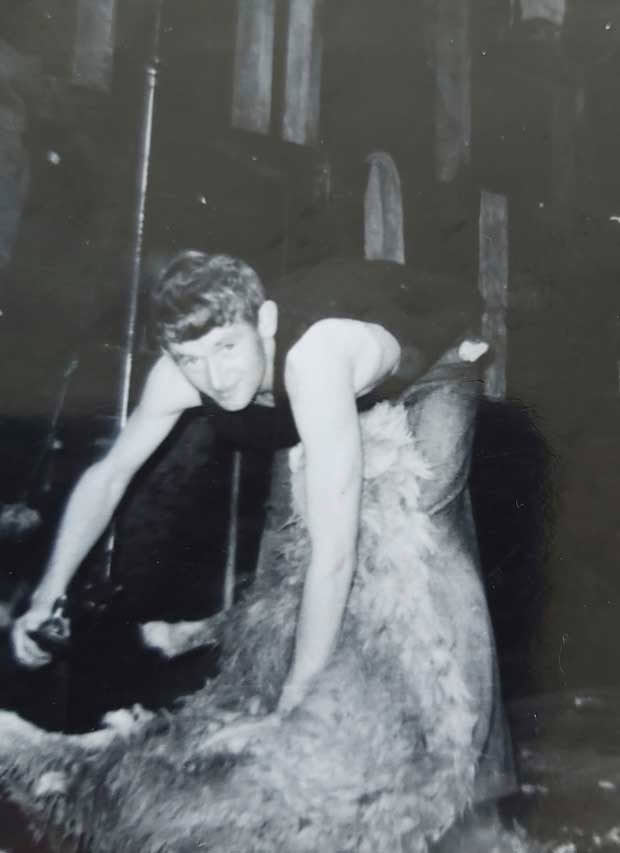
Lynda’s father Jock shearing sheep in the 1970s.
But, oh, how he laughed last month when, with the level four lockdown looming and no hope of hiring a local shearer in time, I asked Dad to teach me how to shear our three pet sheep. He laughed almost as hard as my brother-in-law, but not quite as hard as my husband. “You can’t shear a sheep,” they scoffed. “Shearing is a hot, hard job. It’s a man’s work.”
Dad, at least, knew what he was on about. Having left school at 15, he was sent off to agricultural college in Bulls where he learned how to shear, smoke and brew grog – all of which came in handy when he joined his first shearing gang, down the main trunk line in Taumarunui, aged 18.
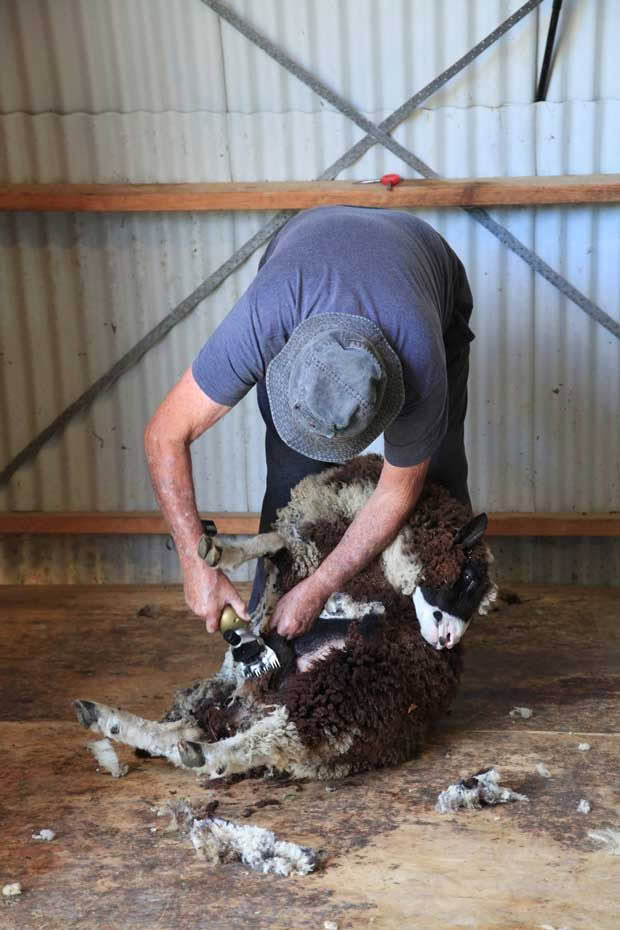
Lynda’s dad shearing Tiki, the naughty ram.
In his prime, Dad could do 400 ewes in a day. He made more in a day than he did in a week as a farm labourer and, years later, when my parents took over my grandfather’s dairy farm and nearly went broke, Dad’s side hustle as a shearer kept them afloat.
Dad hadn’t shorn a sheep in decades and I’d never stepped foot in a shearing shed but how hard, honestly, could it be? “Not that hard at all,” my friend Kirsty Cooper declared at our last local rural ladies’ long lunch.

Kirsty is a biochemistry graduate and former police forensic fingerprinting investigator turned accountant (and our school PTA quizmaster) who spent her teenage years filling wool fadges as a roustabout. “I watched those shearers in action for over a decade as a rousie but never got the chance to pick up a handpiece. So I took matters into my own hands and watched YouTube tutorials.”
She’s a dab hand now, knocking off the 50-odd sheep on her Ararimu lifestyle block each year. Her advice to beginners? Buy a battery-powered handpiece, so you don’t get tangled up in the cord; get the sheep positioned right or they’ll fight every stroke; and keep the combs razor-sharp or you’ll pluck your poor ewes rather than clip them.
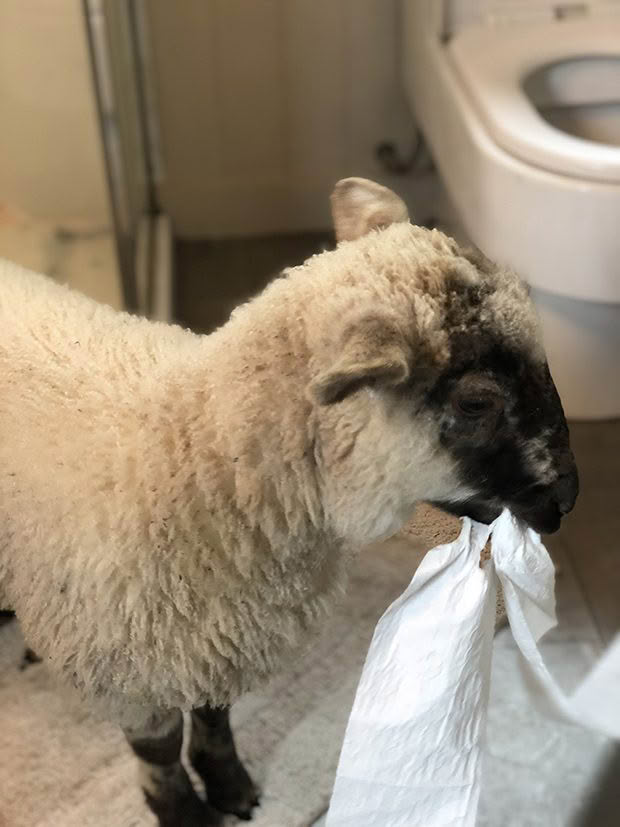
A ”bog roll bandit” caught in the act.
Kirsty reckons anyone can learn to shear a sheep, which is how I ended up at her place with my children’s pet lambs Maisy, Lucy, Tiki – and Dad – in tow. (Maisy, Lucy and Tiki may look familiar. My girls, aka “the bog roll bandits”, and their little brother had a starring role in a ThisNZLife guest blog about toilet paper hoarding before it was even a thing.)
“It is a miracle,” wrote Albert Einstein, “that curiosity survives formal education.” It will also be a miracle, I said to Kirsty, if our pet lambs survive my formal shearing education.
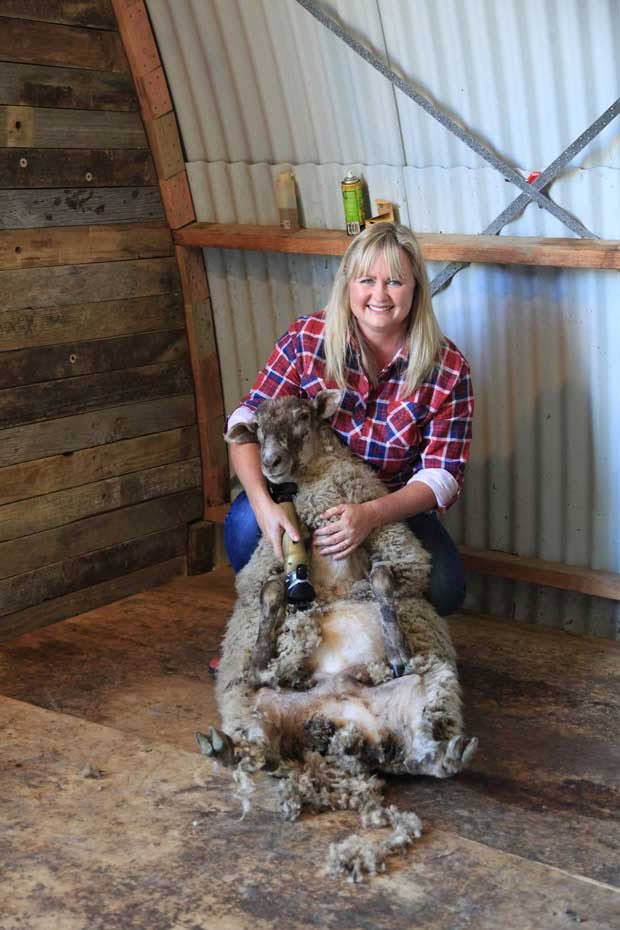
Lynda and Lucy before the shearing.
At 11.27am that morning, I hauled my first victim onto Kirsty’s woolshed floor. With one hand under her brisket, I flipped Lucy onto her back and apologised in advance for the indignities I was about to inflict upon her.
At 11.29, with Kirsty at my side and Dad barking orders from the sidelines, I nervously ran the handpiece down Lucy’s belly and gave her groin a gentle going over.
At 11.33, I slowly and steadily clipped her clean around her legs and tail.
At 11.39, with her firmly wedged between my already wibbly-wobbly legs, I held her head up and did my best not to cut her throat as I slid the handpiece right up the guts to her head.
By 11.49, Lucy was partially shorn, and I was completely buggered.
At 11.57, we both lay on the floor in a sweaty heap. Lucy didn’t seem too bothered by the situation but my quadriceps were quivering with lactic acid and my red plaid shirt – bought specially to add an air of country chic to our photoshoot – was plastered to my sweaty skin.
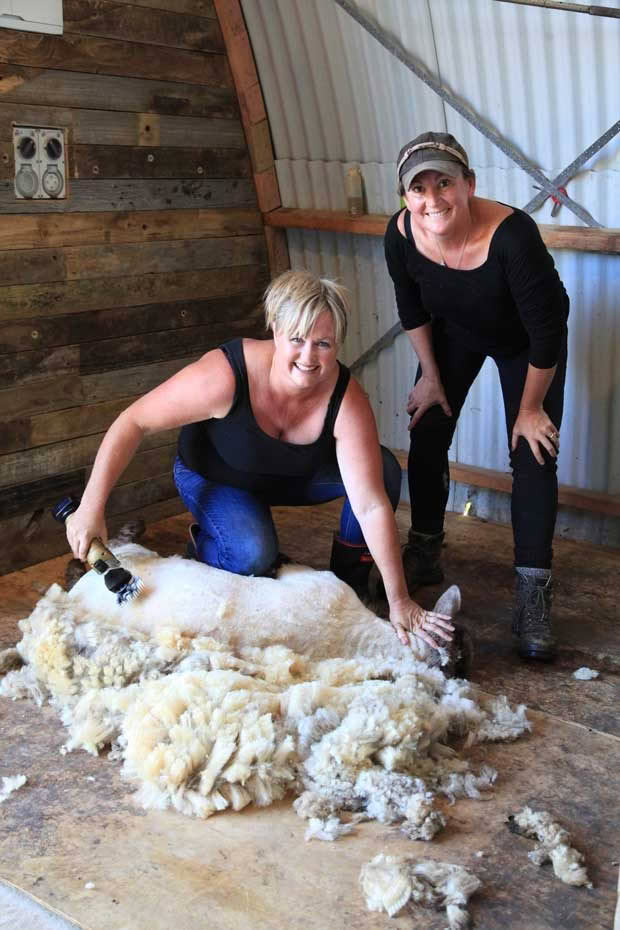
Kirsty critiques Lynda’s technique.
At 11.59, I dispensed with any shred of sartorial self-respect, stripped down to the black singlet favoured by farm labourers across our fair nation, and went in for the long blow – the satisfying run of the combs along the full length of the sheep.
By 12.04, when I started down the last side, Dad was suddenly profuse with praise. “I’ve never seen anything like it!” he exclaimed to Kirsty. “Look how calm she is!” I puffed with pride until I realised he was talking about Lucy, not me.

According to the Guinness Book of Records, Irishman Ivan Scott is the fastest shearer in the world: in 2010 he stripped an old ewe of its fleece in exactly 37.9 seconds. It took me almost 37 minutes to shabbily shear most of Lucy, while Kirsty knocked off Maisy in 13 minutes and Dad tidied up Tiki in just six minutes.
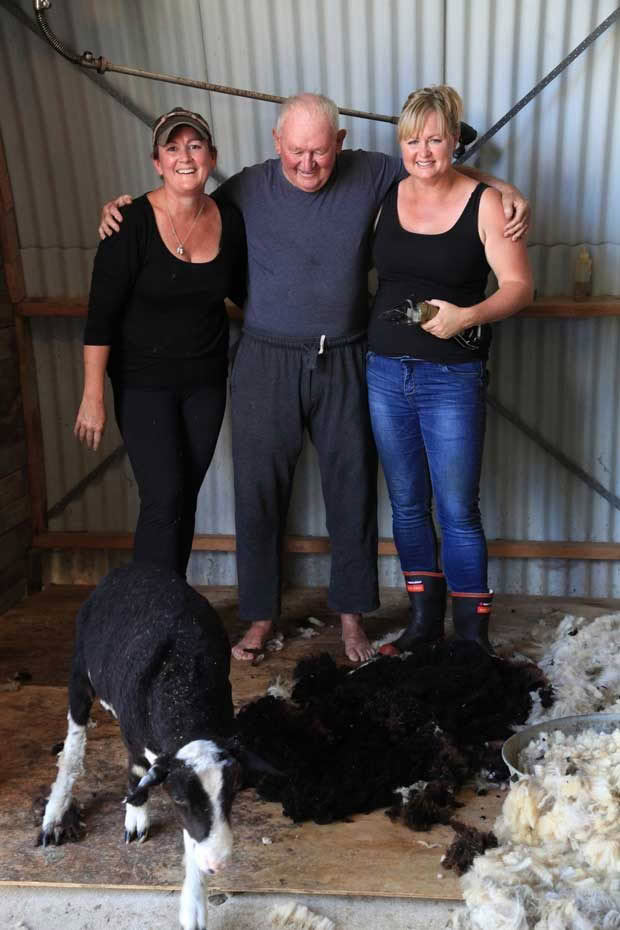
Kirsty, Jock, and Lynda stand triumphantly while Tiki makes a run for it.
Dad was right. Shearing is bloody hard slog, even for a woman. I went into the lockdown with aching arms and legs like jelly but photographer Sally Tagg fared even worse because Tiki, now a testosterone-fuelled teenage tupper, took unkindly to having his photograph taken for this story and charged at her, breaking her ankle.
Sadly, even the most #instaworthy ram lambs have a habit of ageing into aggressive adults and, two days later, Tiki attacked me as I was picking ‘Granny Smith’ apples in our orchard. So, as the government prepares to lower our Covid-19 restrictions from Level Four to Level Three, I’m afraid to report that not all of us are coming out of lockdown alive.
Rest in peace, you bald and bolshy little bugger.
READ MORE

